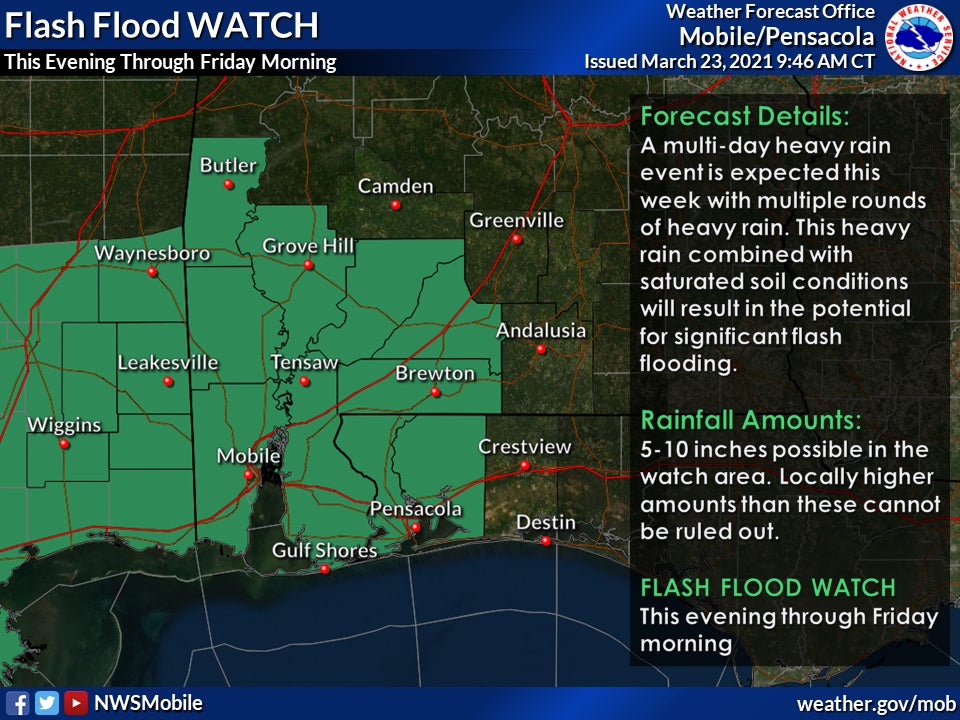Forgotten Trails – by Lydia Grimes
Published 11:37 pm Wednesday, January 7, 2009
By Staff
Saga of Troutman murder continues
As promised, I'm pickicking up the story this week about the Troutman murder.
Jesse's funeral was held at Pollard on the evening of January 2, 1905, and interment was in the Pollard Cemetery. The attendance was very large and many came from a distance because of the popularity of the deceased.
Several tributes had been written to Jesse during his lifetime and at his death C.W. Robbins wrote:
At the time of his death Jesse Troutman was 38 years old. He was the brother of Mrs. W.H. Leatherwood, W.J., S.B., F.L., and C.J. Troutman, all of Canoe and Mrs. H. Burnett of Belleville, Mrs. J.D. Clard of Scranton, Miss., also Mrs. Neil McMillan, deceased.
The Trial
The preliminary trial of Hancock and Weaver took place on Jan. 6-7, 1905, before Justices McConnell and Lynn. Weaver stoutly disclaimed aiding or abetting the crime and stated that he was merely unfortunately present when it was committed.
Boland Weaver was given his liberty.
J.M. Rabb amd G.W.L. Smith represented Hancock. He was remanded to jail without bail to await action by the Grand Jury.
The March, 1905, Grand Jury indicted Fred Leslie Hancock for murder in the first degree. At the the trial he pleaded insanity, but at the term of court his case was continued due to the absence of witnesses.
The prominence of the three families involved drew a throng of people to the courthouse during that first week of April 70 years ago. Spring weather could not dispel the tragic overtones of the murder case.
Three of Jesse's brothers, big strong-bodied farmers, wept like children as they listened to the story of the tragedy which snuffed out the life of their brother.
It was reported that Hancock sat with his wife and “two beautiful baby boys” in a debonair attitude during the trial, having expressed his confidence that he would be found not guilty.”
I hope to finish this story up in my column next week. It's very interesting and has a lot of historical significance.
Until then, happy hunting!
The trial lasted two days. The jury was out four days, at the end of which time Judge S.E. Brewer, who tried the case, entered an order of mistrial. It was understood that the jury stood eleven for life imprisonment and one for acquitted. Heavy hearted, Hancock returned the Brewton jail.
Escape
Then on the night of May 9, 1906, by sawing two bars of the front door of the jail, Hancock escaped together with a man named Ben Stark.
Although Mrs. Hancock was watched, her husband managed to contact her of his whereabouts and she joined him in Kansas City, Missouri. There Hancock altered his appearance and engaged in horse trading.
That same summer he was arrested because he answered to the description of a horse thief. He might still have not been connected with the Troutman murder, but when the officer apprehended him he is reported to have made his confession.
Hancock had suffered a severe laceration on one foot.
Back in Brewton he asked for some carbolic acid to use in water to bathe the injury. A member of his family took him a one-ounce bottle of carbolic acid.
Justice
On that night on July 8, 1906, Hancock drank the entire contents of the bottle. He succumbed a few minutes later having left a note in which he said he was going where he would get a just trial.
Thus was the full circle of justice completed. At least insofar as the two principles involved in the case were concerned.
As for Hancock's widow we can only assume that after a time of shock, she picked up the threads of her life to rear her two sons.
The sister-in-law, having lost both Troutman and her brother-in-law in the tragic chain of events, became deranged for some time, but finally recovered.
The cannons
The cannons came to Brewton during the summer of 1906, and although they have silently stood watch over many events such as the Troutman-Hancock case, the cannons themselves have led a peaceful existence.
According to Ed Leigh McMillan and John David Finlay, the cannons were given to Escambia County by Fort Barrancas at Pensacola early in 1905, when that fort was disposing of the antiquated artillery.
Fort Barrancas was built by the Spaniards, but the cannons at Brewton, according to an expert who came here and examined them, were made after the Civil War and have probably never been fired. The have not been fired since they were brought to Brewton.
Although the cannons have played no significant role in Brewton's history, they have been silent sentinels for some 70 years and from their imposing appearance give Brewton the feeling of a fortified city.




